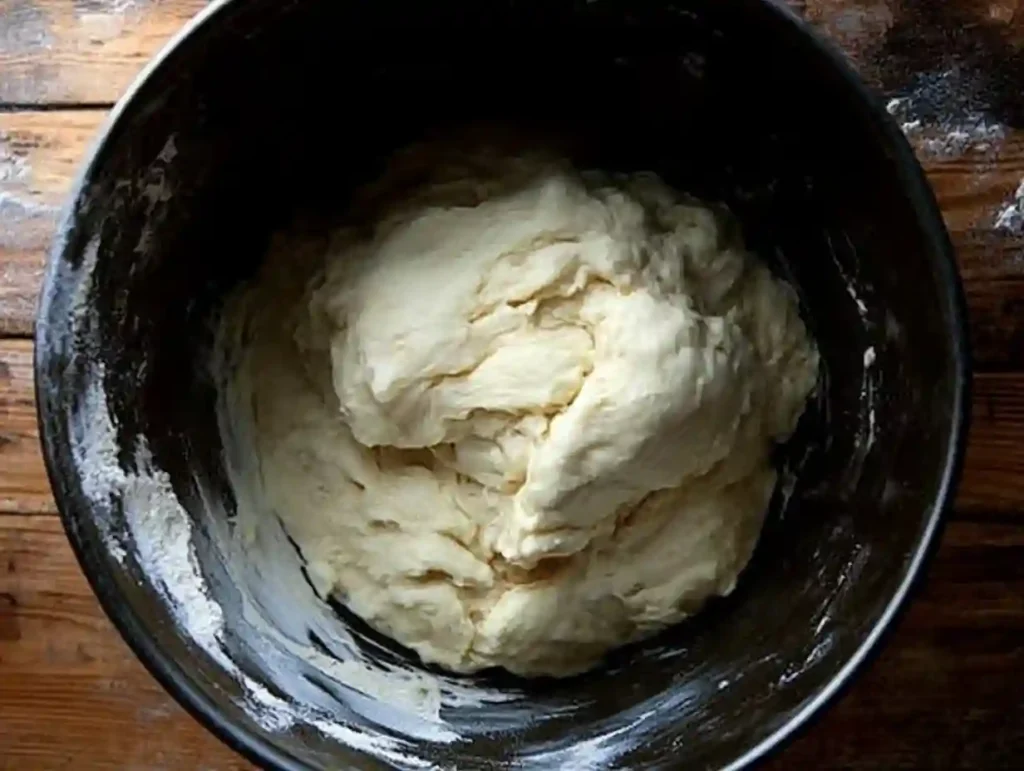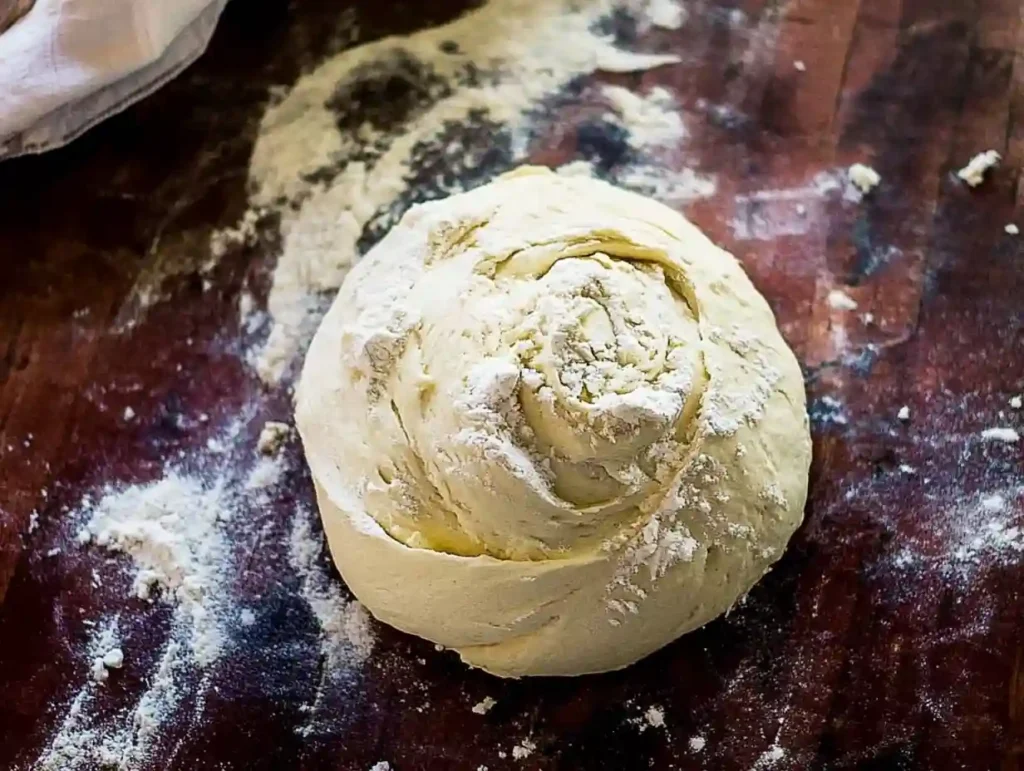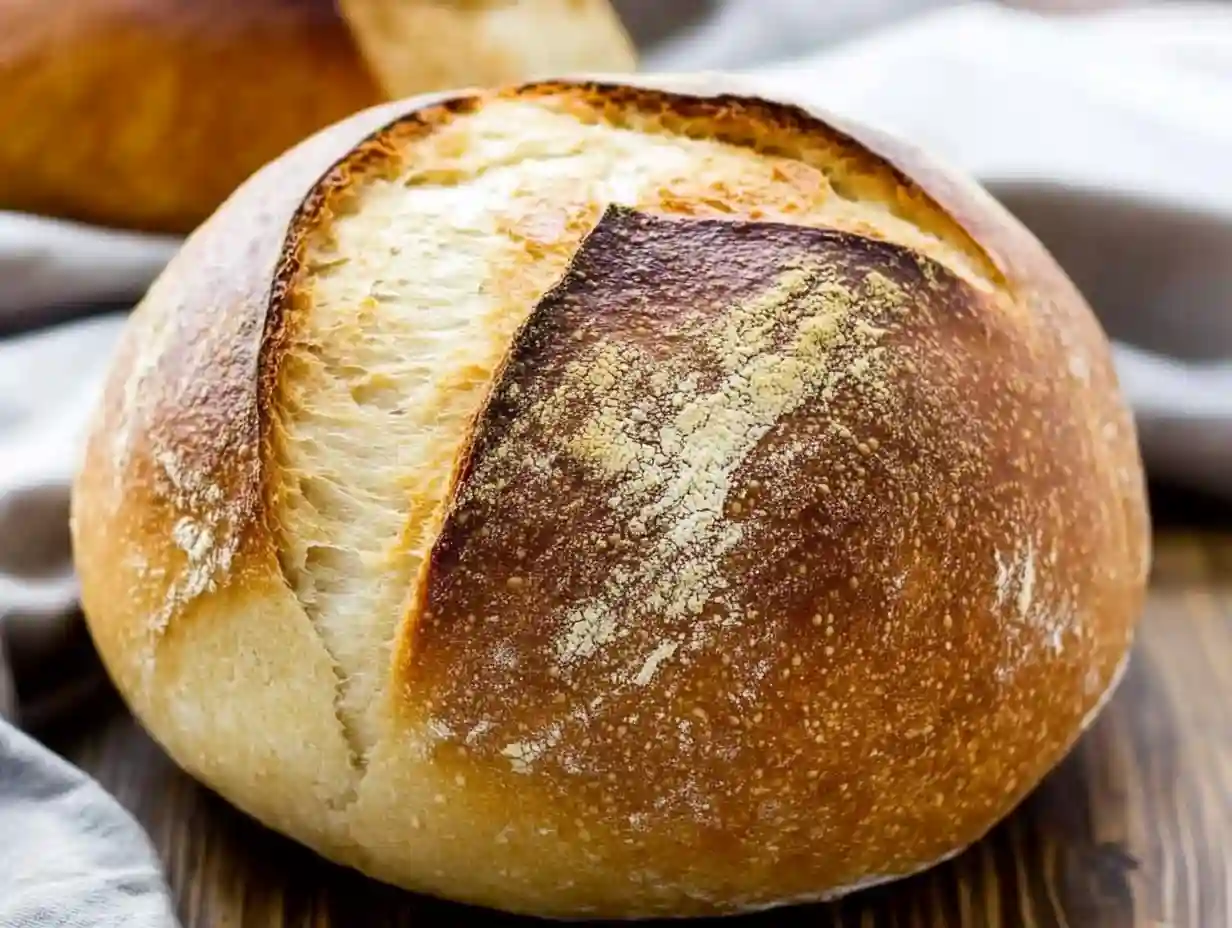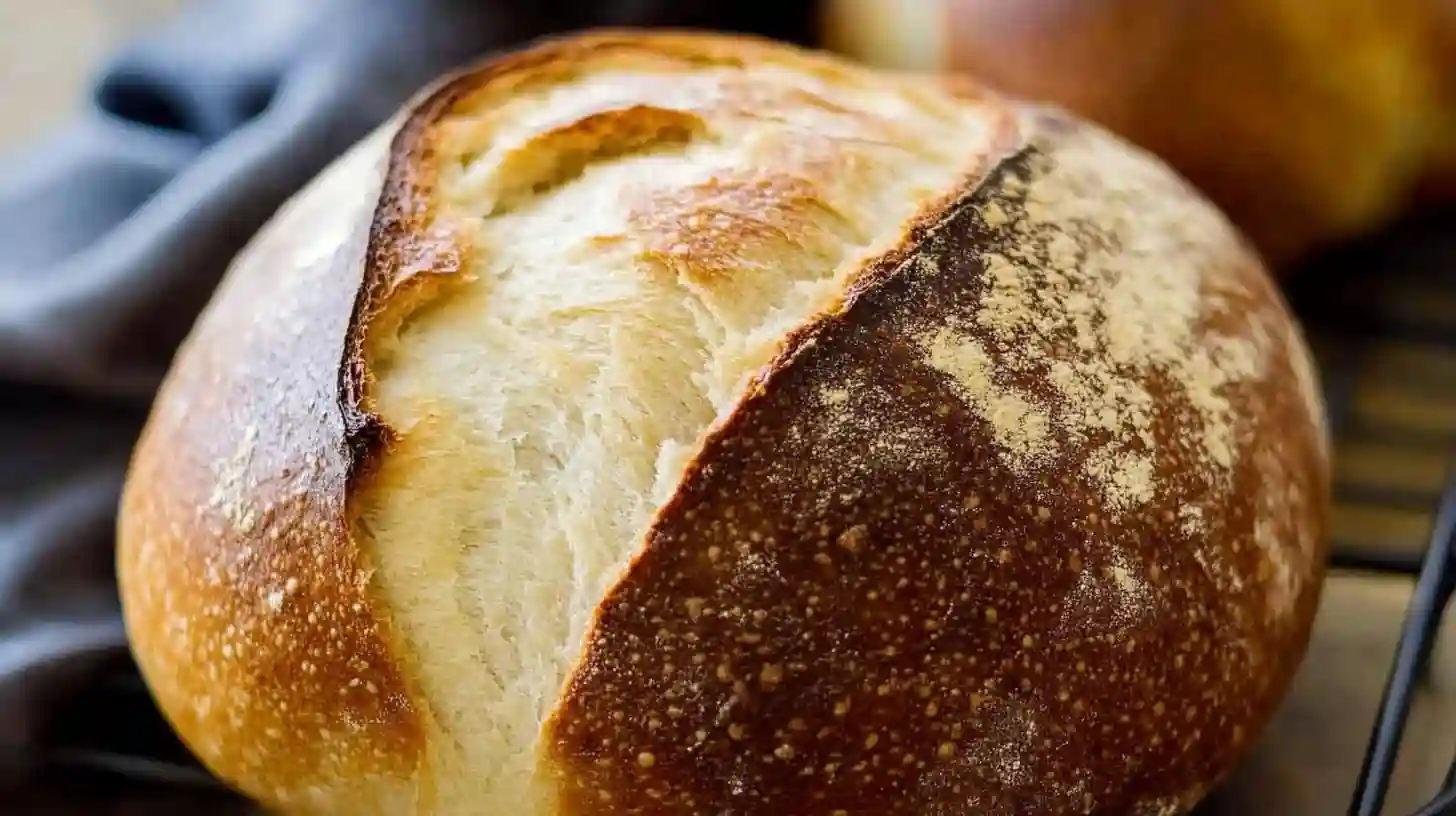Are you ready to bake a loaf of homemade sourdough bread that will fill your home with irresistible aromas? If you’ve been curious about sourdough bread, this is the perfect place to start. Not only is it incredibly satisfying to make, but this sourdough bread recipe also connects you to centuries of baking tradition. Whether you’re a beginner or a seasoned baker, this recipe will guide you step-by-step toward making the perfect loaf.

Why You’ll Love This Sourdough Bread Recipe
If you’re wondering why you should try this sourdough bread recipe, here are a few reasons that might convince you:
- Minimal Ingredients: With just a few simple ingredients, you can create a bread that’s full of flavor and texture.
- No Kneading: Unlike many traditional bread recipes, sourdough doesn’t require a lot of hands-on work, which makes it perfect for busy bakers.
- Natural Fermentation: The wild yeast and bacteria in the starter create a tangy, flavorful loaf that’s much more nutritious than store-bought bread.
- Versatile: This sourdough bread recipe can easily be customized to suit different diets, whether you’re gluten-free, dairy-free, or looking to add extra flavor variations.
- Impressive Results: Making sourdough from scratch is rewarding and will surely impress your family and friends with its rustic look and delicious taste.
Ingredients Needed
For this sourdough bread recipe, you’ll need the following ingredients:
- 500g all-purpose flour (or bread flour for a chewier texture)
- 350g water (room temperature)
- 100g sourdough starter (active and bubbly)
- 10g salt (use sea salt for the best flavor)
Ingredient Alternatives:
- Gluten-Free Flour: If you need a gluten-free version, swap the all-purpose flour with a gluten-free flour blend designed for baking bread.
- Dairy-Free: This recipe is already dairy-free, making it suitable for those who avoid dairy.
Step-by-Step Instructions
1. Mix the Dough
In a large bowl, combine the flour, water, and sourdough starter. Stir with a wooden spoon or your hands until the mixture comes together as a rough dough. It may look slightly shaggy—that’s okay!

2. Autolyse (Rest the Dough)
Cover the dough with a damp cloth and let it rest for 30 minutes. This allows the flour to hydrate, making the dough easier to handle.
3. Add Salt and Mix
After the dough has rested, sprinkle the salt over the dough and mix it in thoroughly. You can use the “stretch and fold” method: stretch the dough up and fold it over itself. Repeat this process for about 3-4 minutes.
4. Bulk Fermentation
Cover the bowl with a lid or cloth and let the dough ferment at room temperature for 4-6 hours. Every 30 minutes during the first two hours, perform a series of stretch and folds to help the dough build structure.

5. Shape the Dough
After the dough has fermented, gently turn it out onto a floured surface. Shape it into a round or oval loaf, depending on your preference. Be gentle to maintain the air bubbles created during fermentation.

6. Final Proof
Place the shaped dough into a well-floured proofing basket (or a bowl lined with a kitchen towel) and cover it. Let it proof for 1-2 hours at room temperature or overnight in the fridge for a slower rise.
7. Preheat the Oven
Place a Dutch oven (or baking stone) in the oven and preheat to 450°F (230°C) for at least 30 minutes before baking.
8. Bake
Carefully transfer the dough into the preheated Dutch oven. Score the top of the bread with a sharp knife or razor blade, then cover with the lid. Bake for 20 minutes, then remove the lid and bake for another 25-30 minutes until golden brown.
9. Cool
Once your sourdough is baked, allow it to cool completely on a wire rack before slicing. This is the hardest part, but it’s worth the wait!
Recipe Tips & Variations
- Flavor Boost: Add a tablespoon of honey or olive oil to the dough for extra flavor and richness.
- Herbs and Seeds: For a savory twist, mix in fresh herbs like rosemary or thyme, or sprinkle seeds like sesame or sunflower on top before baking.
- Longer Fermentation: For an even more complex flavor, allow your dough to ferment for a longer period in the fridge. The cold fermentation process adds depth to the tanginess.
How to Store & Reheat
- Storing: Store leftover sourdough bread in a paper bag or wrapped in a kitchen towel for up to 3 days at room temperature. For longer storage, wrap it tightly in plastic wrap and freeze it for up to 3 months.
- Reheating: To refresh stale sourdough, simply sprinkle a bit of water on the crust and place the loaf in a preheated oven at 350°F (175°C) for 5-10 minutes. This will revive the crispy crust.
Frequently Asked Questions (FAQ)
1. How do I know if my sourdough starter is active?
Your sourdough starter is ready to use when it doubles in size within 4-6 hours of feeding and has lots of bubbles. It should also have a slightly tangy, fruity smell.
2. Can I make sourdough bread without a starter?
Unfortunately, a sourdough starter is essential for this recipe. It provides the natural yeast and bacteria that give sourdough its unique flavor and texture.
3. Can I make sourdough bread in a regular baking pan?
While using a Dutch oven creates the perfect steam environment for sourdough, you can bake the bread on a baking stone or in a regular pan. Just be sure to add steam during baking by placing a pan of water in the bottom of the oven.
4. How can I make my sourdough more tangy?
A longer fermentation period will develop a tangier flavor. Try letting your dough rest in the fridge overnight for a more pronounced sourness.
Conclusion
Baking your own sourdough bread is a rewarding experience that’s well worth the effort. Whether you’re a novice or a seasoned baker, this recipe provides a straightforward way to create delicious, homemade bread that’s full of flavor. Give it a try, and let us know how it turns out! If you love this recipe, don’t forget to share it with friends and follow us for more bread-making tips and delicious recipes. Happy baking!

Sourdough Bread Recipe
Ingredients
- 500 g all-purpose flour or bread flour for more chew
- 350 g water room temperature
- 100 g sourdough starter active and bubbly
- 10 g salt sea salt preferred for the best flavor
Ingredient Alternatives:
- Gluten-Free Option: Use a gluten-free flour blend designed for bread baking.
- Dairy-Free: This recipe is naturally dairy-free so no need to make substitutions here.
Instructions
- Mix the Dough: Combine flour, water, and sourdough starter in a large bowl. Stir until a shaggy dough forms.
- Autolyse: Cover the dough with a damp cloth and let it rest for 30 minutes.
- Add Salt: Sprinkle salt over the dough and mix using the “stretch and fold” method for about 3-4 minutes.
- Bulk Fermentation: Cover the dough and let it ferment for 4-6 hours, performing stretch and folds every 30 minutes for the first 2 hours.
- Shape the Dough: Turn out the dough onto a floured surface, shape it into a round or oval loaf, and place it in a proofing basket.
- Final Proof: Let the dough proof for 1-2 hours or refrigerate overnight for a slower rise.
- Preheat the Oven: Preheat the oven to 450°F (230°C) with a Dutch oven inside.
- Bake: Place the dough into the preheated Dutch oven, score the top, and bake for 20 minutes with the lid on. Remove the lid and bake for an additional 25-30 minutes.
- Cool: Let the bread cool completely on a wire rack before slicing.

